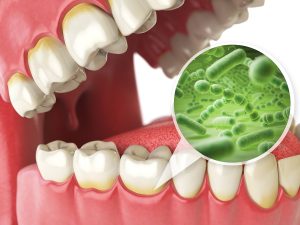The fasting mimicking diet (FMD) was at the center of this year’s anti-aging conference in Las Vegas. This was the 25th Annual World Congress on Anti-Aging Medicine in Las Vegas, Dec. 14-16, 2017. Dr. Valter Longo, PhD reviewed some of the research he had done on longevity in yeast cells, worms and mice.
Fasting mimicking diet relevant in humans
Dr. Longo pointed out that this type of research has relevance in humans. If there was a cure for cancer, heart disease, stroke and diabetes, we would live 13 years longer. But if we stimulated longevity with this pulsed calorie restricted diet, we would live on average 30 years longer. There is a rare genetic abnormality where people are deficient for IGF-1, a growth factor produced in the liver. These genetically IGF-1 deficient people live longer and do not develop cancer. Observations like these and detailed mouse experiments inspired Dr. Longo to develop a new diet plan. Patients would receive a fasting mimicking diet on 5 days per month. The rest of the month would consist of a normal, balanced diet. 5 days of the month the person would consume a low 800-calorie diet. This is enough to ensure adherence to the diet, but low enough to lead to enormous metabolic changes including youth-preserving stem cell stimulation.
Clinical Application of fasting mimicking diet in cardiovascular health
Dr. Joel Kahn, Prof. of Medicine at the Wayne State University School of Medicine lectured later that day. He is also the Director at the Kahn Center for Cardiac Longevity. His talk was entitled “The Fast Track to Slow Cardiac Aging: Fasting &Targeted Nutrition”. He mentioned that a fasting mimicking diet was a powerful tool in cardiology to prevent heart attacks and hardening of arteries. He explained in detail the complex aging pathways that involve three components, IGF-1, mTOR and PKA. When lifestyle choices stimulate these genetic markers, accelerated aging is a consequence. But with the inhibition of those markers longevity can happen. He added that researchers looked at heart cells, where the same principles apply. Dr. Kahn pointed out that the basic research of Dr. Longo enables clinicians to see positive results in patients who follow caloric restriction for 5 days in a month on a regular basis.
How does the fasting mimicking diet work?
It is best to let one of the users of this diet explain how it works. Once per month you eat calorie-restricted food with only 800 calories per day and you follow this regimen for 5 days. Some patients receive 1100 calories for the first of these 5 days, if they have difficulties switching from normal food to the boxed food. Dt. Longo has developed boxed food, called ProLon (from L-Nutra). ProLon stands for “pro longevity”. Dr. Longo and Dr. LaValle mentioned at the conference that these prepared meals make it a lot easier for patients to stick to the low calorie diet. Three hundred dollars for the boxed food for 5 days are a stiff price, and this may well be out of reach for you.
Alternative way to make your own 800 calorie food at home
Nevertheless, this should not stop you. You can look at the ingredients online and copy the boxed food by creating your own balanced 800 calories per day food at home. It is true: you have to do some research! But counting calories and finding information about the caloric content of food on the Internet is not difficult. And preparing these very, basic, small and simple meals does not require a degree in nutrition. Here is another testimony from a user of the fasting mimicking diet.
Effect of the fasting mimicking diet on the metabolism
In the past it was thought that only ketogenic diets or periods of fasting would trigger longevity genes. But the basic research of Dr. Longo and others has shown that a low calorie diet for only 5 days can achieve the same thing. Longevity genes are activated; the negative aging pathways including IGF-1, mTOR and PKA are suppressed. The immune system gets activated from this. It also leads to lowering of LDL cholesterol, triglycerides, blood pressure, insulin resistance, and diabetes improves. With the fasting mimicking diet the stomach sees some food, but the cells are fasting. According to Dr. Kahn this combination down regulates the body’s key nutrient-sensing pathways, which activates cellular regeneration and rejuvenation.
Clinical observations
Dr. Khan observed a high compliance rate with 3 cycles of the fasting mimicking diet. 94% of a group of patients were compliant over 3 months. Mild fatigue, mild headaches and mild weakness were present, but improved with each cycle. In addition to the above findings Dr. Khan found that there was weight loss, abdominal fat loss and waist circumference loss. There was also a reduction in IGF-1 levels, a reduction of the C-reactive protein and stimulation of stem cells.
Inflammation reduced, autoimmune diseases improved
The reduction of the C-reactive protein proves that semi-fasting reduces inflammation. The finding of stimulation of stem cells explains that regenerative processes can take place. Pain disappears, people report more energy and are generally feeling better.
There are other clinical findings. The positive effects from following the fasting mimicking diet last for several months. Also, when patients are on chemotherapy for cancer, the FMD will protect the healthy cells from the side effects of chemotherapy.
Dr. Kahn and Dr. LaValle noted that autoimmune disease responded to FMD. This was shown in both animal experiments using mice and in clinical case reports. Dr. LaValle described a 46-year old former Olympic athlete swimmer who had multiple sclerosis. After FMD she lost all of her muscle aches and cured her optic neuritis. This was something conventional medicine could not do for her.
Clinical applications of fasting mimicking diet
Here are some of the conditions that will respond to it.
- Obesity, because of the weight loss effect
- Diabetes: insulin resistance becomes lower and blood sugar levels drop.
- High blood pressure reduced: many patients were able to reduce their medications or discontinue them
- Prevention of heart attacks and strokes
- Pain conditions will improve as all kinds of pain disappears, an effect for which at this point is no explanation
- Autoimmune diseases like MS and rheumatoid arthritis improve, likely because of the effect of increased stem cell circulation
- Prevention of heart attacks because of reduction of LDL, triglycerides and CRP
- Cancer cure rates improved by protecting normal cells and bone marrow
- Longevity improved in mice with a 3-fold increase of their life span. Telomere length in humans was increased. Increased stem cells will find defective areas that need repair. This effect will open up a new chapter in medicine.
Maintaining the achievements of the fasting mimicking diet
At this point the implications of this new approach to weight loss and metabolic rejuvenation can only be estimated.
Limiting calories for 5 days triggers a metabolic change, which is permanent. You can experience the full effect of this rejuvenating low calorie treatment. You can do it every month without having to fear vitamin or mineral deficiencies.
Here is another link to the website of Dr. Axe where the fasting mimicking diet is also recommended.
Conclusion
The 25th Annual World Congress on Anti-Aging Medicine in Las Vegas, Dec. 14-16, 2017 had a new theme. Several talks dealt with the fasting mimicking diet (FMD). It is a calorie-reduced diet for 5 days in a month that will reset your metabolism. But it will also stimulate your stem cells and can heal autoimmune diseases. If you need chemotherapy for cancer, it protects your bone marrow and improves cancer cure rates. The interesting thing is that the effects of this low calorie treatment persist permanently for many months.
With the help of this diet longevity has been shown in mice; there has been a threefold life expectancy boost. Smaller trials in humans have shown telomere lengthening and stem cell stimulation. It is too early to say what the long-term effects will be for humans. But you can treat yourself with the FMD for 5 days of every month on an ongoing basis. The other days of the month you are eating a normal diet. This will ensure that your metabolism stays in top shape.
A healthier and longer life
Practical applications for the FMD are huge. Patients with obesity, diabetes and pain conditions all benefit from this. High blood pressure drops. There will be prevention of heart attacks, and there is improvement in patients with autoimmune diseases. There is better cancer survival when on the FMD. Finally there is a strong possibility that you will live longer, but also stay healthier on this intermittent calorie restricted diet.
As Dr. LaValle said: it is “fasting with food”, and Dr. Kahn added: “Eat less, live more!”
More info: Life extension through calorie restriction.










